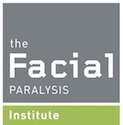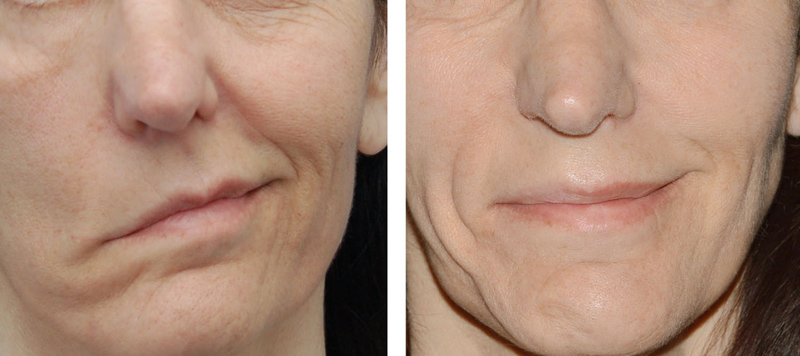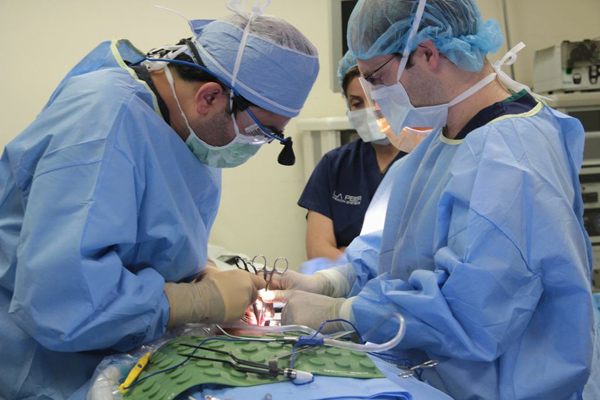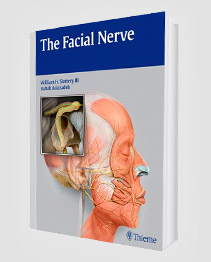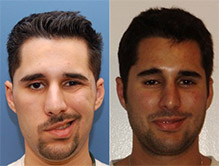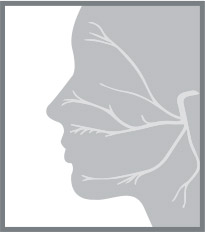Facial paralysis can affect one or both sides of the face. The condition can make it tough for patients to produce natural facial expressions and must be treated properly.
Treatment of facial paralysis varies. For most patients with Bell’s palsy, facial paralysis is temporary. But, if the facial nerve is permanently damaged, surgery or other facial nerve compression treatment options may be required.
Babak Azizzadeh, MD, FACS is the Director of The Facial Paralysis Institute and a world-renowned facial paralysis expert, particularly known for his work in facial nerve decompression. He is highly regarded for his expertise in the field and has appeared on The Oprah Winfrey Show, the Dr. Oz Show, and The Doctors for his groundbreaking work in the treatment of facial paralysis.
At the Facial Paralysis Institute in Los Angeles, Dr. Azizzadeh strives to bring facial paralysis patients the highest quality care and the most innovative treatments. He can meet with patients, evaluate their symptoms, and determine their eligibility for facial nerve decompression surgery or other treatments.
What Is Facial Nerve Paralysis?
The facial nerve is used to control facial movement on one side of the face. If the nerve is damaged or stops working properly, it can become exceedingly difficult to smile, frown, and make other facial expressions. This is due to the fact that the facial nerve has branches that control muscle groups responsible for brow, eyelid, cheek, and lip movement.
Facial nerve paralysis requires immediate diagnosis and treatment, including potential procedures like facial nerve decompression. Failure to properly identify this issue can lead to permanent facial paralysis.
Facial Nerve Paralysis Symptoms
Common facial nerve paralysis symptoms include:
-
- Difficulty eating or drinking
- Drooling
- Sensitivity to sound on the paralyzed side of the face
- Difficulty opening and closing the eye on the paralyzed side of the face
- Ear pain (in or behind the ear)
Facial nerve paralysis symptoms that persist for many weeks or months may require surgical intervention. By meeting with Dr. Azizzadeh, a patient can explore treatment options to correct their facial paralysis symptoms. During a consultation with Dr. Azizzadeh, a patient can determine if surgery or other treatment options can be used to address facial nerve paralysis symptoms.
What Is Facial Nerve Decompression Surgery?
Neurolysis can help those living with facial paralysis regain facial function and improve facial symmetry. It is performed when the facial nerve is being compressed in the bony canal of the temporal bone.
In some cases, the facial nerve is so inflamed that it becomes pressed, or cramped, within the confined space of the bony canal. When facial nerve compression surgery is performed by an experienced facial paralysis surgeon like Dr. Azizzadeh, releasing the pressure on the nerve can alleviate facial paralysis symptoms.
Causes of Facial Nerve Compression
Facial nerve compression can occur for various reasons, including infection, inflammation, or other damage to the nerve itself. In such cases, facial nerve decompression may be considered as a therapeutic intervention. In any of these instances, patients can gradually lose the ability to move their facial muscles over a period of weeks or months.
A head or neck tumor or stroke can contribute to facial paralysis and associated compression of the facial nerve. In addition, a cancerous tumor located near the facial nerve or in the area of the brain that delivers signals to facial muscles can lead to paralysis. There are also instances in which surgery to remove a growth can cause facial nerve compression and/or paralysis.
Dr. Azizzadeh performs an in-depth evaluation of a patient’s facial paralysis symptoms. If Dr. Azizzadeh believes a patient is dealing with a compressed facial nerve, he determines if microscopic decompression of the facial nerve or other treatment options can be used to correct this issue.
Facial Neurolysis Technique
Facial neurolysis requires an advanced surgical technique. Thus, the procedure should only be performed by an expert surgeon who understands how to minimize patient risk.
Generally, facial neurolysis treatment is performed through a middle fossa craniotomy and/or through the mastoid bone behind the ear. Pieces of the bone are removed so that the inflamed facial nerve can expand, and the pressure that may be causing some of the facial paralysis symptoms is relieved. Depending on the patient, the surgeon may perform the procedure through the middle cranial fossa method or a mastoidectomy, or a combination of the two.
Dr. Azizzadeh outlines all aspects of facial nerve surgery before treatment. He explains his facial nerve decompression technique in detail, as well as responds to his patient’s concerns and questions. In doing so, Dr. Azizzadeh ensures his patient knows exactly what to expect during a facial nerve decompression treatment.
Facial Nerve Decompression Complications
Facial nerve surgery risks include:
-
- Hearing loss
- Dizziness
- Infection
- Ear numbness
- Ringing in the ear (tinnitus)
Dr. Azizzadeh will not perform facial nerve surgery if he believes the risks of treatment outweigh the potential benefits. In this scenario, Dr. Azizzadeh offers facial nerve decompression alternatives.
Is Facial Nerve Surgery Effective?
Facial nerve surgery is sometimes used to treat long-standing Bell’s palsy and other types of facial paralysis. It alleviates pressure on the facial nerve, and by doing so, often leads to progressive facial paralysis improvement and healing.
Facial nerve surgery patients often achieve the optimal results if they undergo treatment within 30 days of the onset of facial paralysis symptoms, according to Dr. Azizzadeh. At this point, Dr. Azizzadeh can use facial nerve surgery to eliminate facial nerve irritation before it becomes a permanent issue.
Who Is a Candidate for Nerve Nerve Surgery?
Facial nerve surgery is typically available to patients dealing with permanent facial palsy in which the facial nerve is intact but inflamed and compressed within the bones of the face. This can be present in patients with facial paralysis as a result of traumatic injury, infection, or Bell’s palsy. Facial nerve surgery is generally performed after other less invasive treatments for the symptoms of facial palsy have been attempted. An optimal result after facial nerve surgery is seen about one year after treatment.
To determine if a patient qualifies for facial nerve decompression surgery, Dr. Azizzadeh first examines their face. This allows him to analyze the extent of the patient’s facial paralysis.
Dr. Azizzadeh reviews a patient’s medical history and finds out how long he or she has been dealing wih facial paralysis symptoms. Blood work, imaging (MRI and/or CT scans) and other tests such as EMG and ENoG can also be performed to determine if facial nerve surgery is a good treatment option.
If a patient does not qualify for facial nerve decompression, other facial paralysis treatments are available. Dr. Azizzadeh is happy to teach individuals about facial nerve surgery alternatives such as cross-facial nerve graft and masseteric facial nerve transfer procedures.
A cross-facial nerve graft requires the use of a patient’s undamaged facial nerve to correct facial paralysis on the opposite side of their face. During a cross-facial nerve graft, Dr. Azizzadeh harvests a dispensable sensory nerve from a patient’s leg, called the sural nerve. He next uses a long interposition graft to link the facial nerves on both sides of a patient’s face. Finally, Dr. Azizzadeh produces a cross-face graft that guides the regenerating nerve fibers across a patient’s face.
Comparatively, a masseteric facial nerve transfer helps improve facial reanimation, particularly among individuals who have been dealing with facial paralysis for less than three years. During a masseteric facial nerve transfer, Dr. Azizzadeh makes an incision near the front of the ear. Next, he identifies the facial nerve and masseteric nerve and sews them together. This ensures the masseteric nerve provides neural input into the paralyzed facial nerve to help a patient restore their facial muscle function and smile.
What to Expect After Facial Nerve Surgery
Facial nerve surgery recovery time can be lengthy, and patients need to plan accordingly. Dr. Azizzadeh establishes realistic expectations for facial nerve surgery from the get-go. Since it can take several months or years before a patient achieves the full results of facial nerve surgery, Dr. Azizzadeh helps his patient prepare for the recovery period. With his extensive approach to facial nerve surgery, Dr. Azizzadeh puts his patient in a great position to achieve the full results of treatment.
Approximately 10 days after facial nerve surgery, a patient’s sutures are removed. Eye protection is required in the first few days of surgery.
Facial nerve surgery patients often can resume their normal activities within about two weeks following surgery. Dr. Azizzadeh requests periodic follow-up visits to ensure their recovery stays on track.
Physical therapy may be required following facial nerve surgery. It can help patients retrain the muscles to move different parts of the face.
A physical therapy program is tailored to a facial nerve surgery patient. Initially, a physical therapist teaches a patient how to perform various facial nerve recovery exercises. The patient is then responsible for completing these exercises.
To ensure treatment recovery is successful, Dr. Azizzadeh offers tips and recommendations throughout this period. He also remains available to his patients and can respond to any post-surgery concerns or questions
Choose an Expert Facial Plastic and Reconstructive Surgeon for Facial Nerve Decompression
Facial neurolysis is a complex procedure, and it must be performed by an expert facial plastic and reconstructive surgeon. Fortunately, Dr. Azizzadeh is a Harvard-trained facial plastic and reconstructive surgeon who administers safe, effective facial nerve decompression treatment.
He understands the intricacies of the facial nerve and works with patients to help them correct their facial paralysis symptoms. First, Dr. Azizzadeh helps a patient determine if facial nerve neurolysis is the right treatment to correct their facial paralysis symptoms. If Dr. Azizzadeh determines facial nerve surgery is the ideal treatment option, he next guides a patient through the surgery process. Dr. Azizzadeh also requests follow-up appointments to help a patient achieve their desired facial nerve decompression surgery results.
Contact Dr. Azizzadeh for a Facial Nerve Surgery Consultation
People who experience facial paralysis symptoms should pursue treatment immediately. This ensures that a patient can receive a medical evaluation and determine a safe, effective way to address their symptoms before they lead to permanent facial paralysis.
For patients who have been dealing with long-lasting facial paralysis symptoms, Dr. Azizzadeh can provide assistance. Dr. Azizzadeh is a dual board-certified facial plastic and reconstructive surgeon who can perform facial nerve decompression surgery or other treatments to restore facial function. To learn more or to schedule a consultation with Dr. Azizzadeh, contact our office online or call us at (310) 657-2203.
Request your consultation with Dr. Azizzadeh today
Call us at (310) 657-2203 to schedule an appointment.
Schedule a Consultation